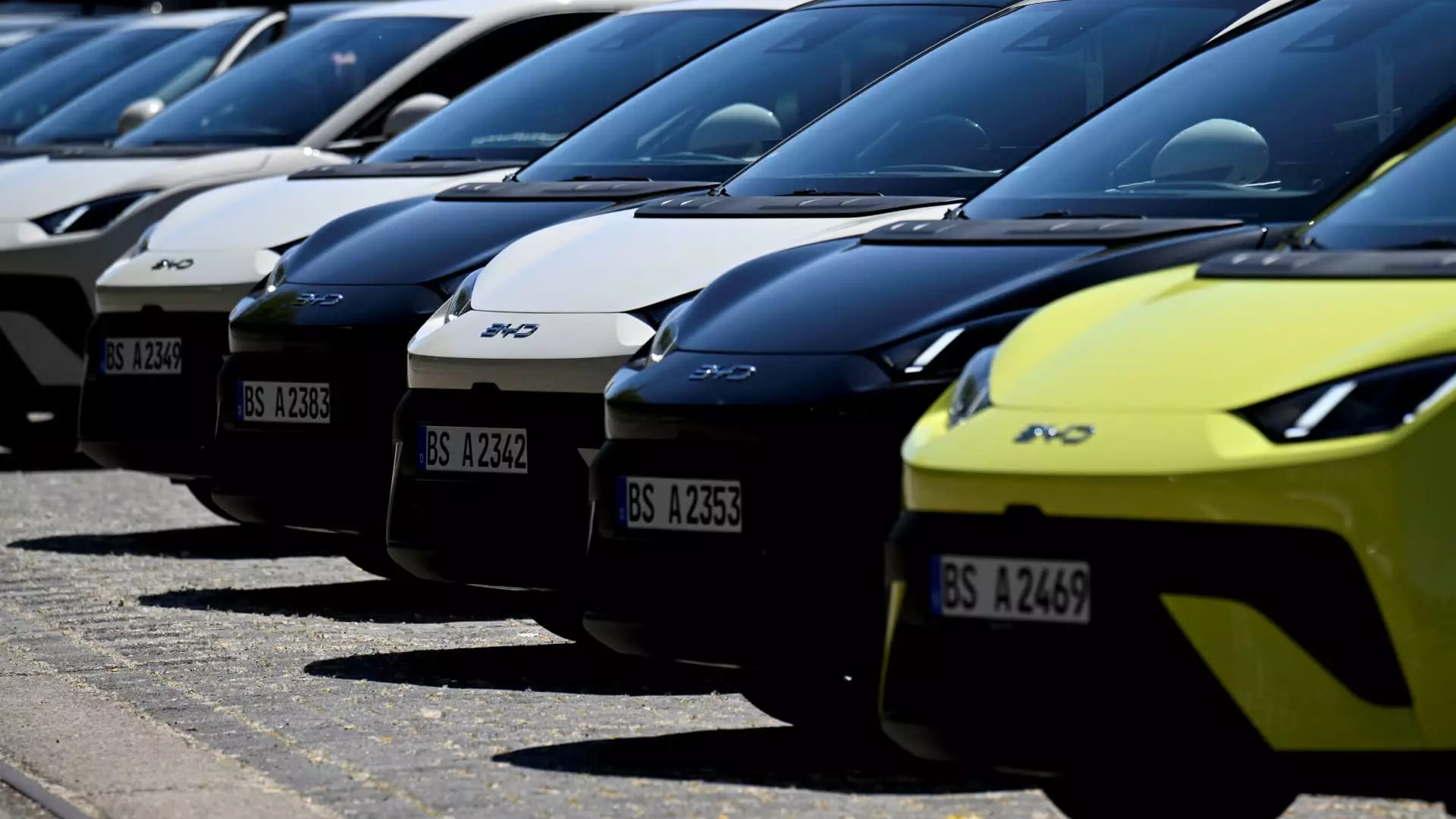In the realm of electric vehicles (EVs), China’s market finds itself embroiled in a fierce price war that continues to escalate. This situation is compelling not only from an economic standpoint but also from a strategic one, as various EV manufacturers jockey for positioning under the shadows of more established brands like Tesla. The recent data from the China Passenger Car Association is telling; Tesla’s sales suffered a notable 15% decline in May year-on-year. In contrast, BYD showcased resilience with a 14% increase in sales, albeit at the cost of substantial discounts—a necessity to maintain its leading position in an increasingly competitive environment. This juxtaposition encapsulates the pressure manufacturers face in an electric car landscape that’s rapidly changing, demanding innovation and adaptability.
The signs are clear: as the volume of players in the EV market swells, the simplistically optimistic narrative of growth gives way to a complex reality. While BYD appears to be suffering growing pains, analysts are predicting further price competition. They expect BYD might fall short of its sales objectives, hinting that the drive for market share may compel the company to engage in even more aggressive pricing strategies. From a center-right perspective, this is both a cautionary tale of overreach and an opportunity for brands that can effectively balance quality with affordability.
BYD vs. Geely: A Shift in Investor Sentiment
Investors are keenly observing the competition, especially in light of analyst recommendations. Geely, for instance, emerges as the “best positioned” player due to its advantageous internal structure and competitive pricing. The automotive conglomerate—home to brands like Galaxy, Zeekr, and Lynk & Co.—is leveraging shared technologies to challenge BYD’s model range effectively. This transition should not be understated; it raises critical questions about business strategies and long-term sustainability in an industry marked by rapid innovation and cyclical volatility.
Analysts from Macquarie recently noted how Geely’s revival of consumer interest—targeting BYD’s well-received models with superior specifications at lower prices—could yield significant returns. This marks a pivotal shift for an industry that is no longer merely about selling electric vehicles; it has morphed into a complex game of chess where strategic positioning significantly impacts market dynamics. Such movements underline concerns over consumer loyalty and brand integrity, both critical components in navigating a volatile economic landscape.
Emerging Contenders: Xpeng and Leapmotor
As the pressure mounts, Xpeng has begun to carve out its own niche, showcasing a superior driver-assist system and an expanding product lineup. The company’s record of over 30,000 deliveries in May, for the seventh consecutive month, speaks volumes about its growing market share. Xpeng’s focus on innovation seems to resonate with consumers, positioning the company favorably amidst stiff competition. Analysts have set an ambitious price target of $24, suggesting that Xpeng is poised for a robust growth trajectory, leveraging technology to gain an edge over rivals.
Similarly, Leapmotor and Li Auto have demonstrated resilience amid the tumult. Leapmotor has crafted a stable market presence while emphasizing affordability, a strategy that resonates with cost-conscious consumers. In contrast, Li Auto has managed to maintain profitability with a premium SUV lineup that skirts direct competition in the mass market. By providing a unique offering that integrates a gasoline range extender, it effectively appeals to those wary of the limits of battery-only vehicles. However, comparisons with BYD’s more aggressive pricing reveal the distinct market carving required for success in such a saturated field.
Global and Domestic Implications—A Double-Edged Sword
The ramifications of this price war extend beyond the domestic Chinese market. For BYD, its ambitions toward overseas expansion are now met with international tariffs as Western markets begin to guard against an influx of cheap EVs. Remarkably, analysts project that the combination of BYD’s premium offerings and international sales could constitute an impressive 40% of its vehicle earnings by 2025. Still, this prediction rests on the assumption that external pressures won’t cripple domestic growth strategies.
The ongoing dialogue surrounding excessive competition and market stabilization is worth considering. With production capabilities surpassing demand, the market must inevitably regulate itself—whether through increased consumer interest or the prudent consolidation of industry players. However, the question remains: can the industry balance innovation with economic realities, or will it succumb to the overwhelming pressures that presently govern it?
Navigating these complexities requires astute business acumen, a keen understanding of market signals, and the ability to adapt rapidly to fluctuating consumer demands. In this ever-evolving landscape, each manufacturer must find their sweet spot—an equilibrium that transcends mere survivability and carves a path for sustainable growth in the years ahead.

